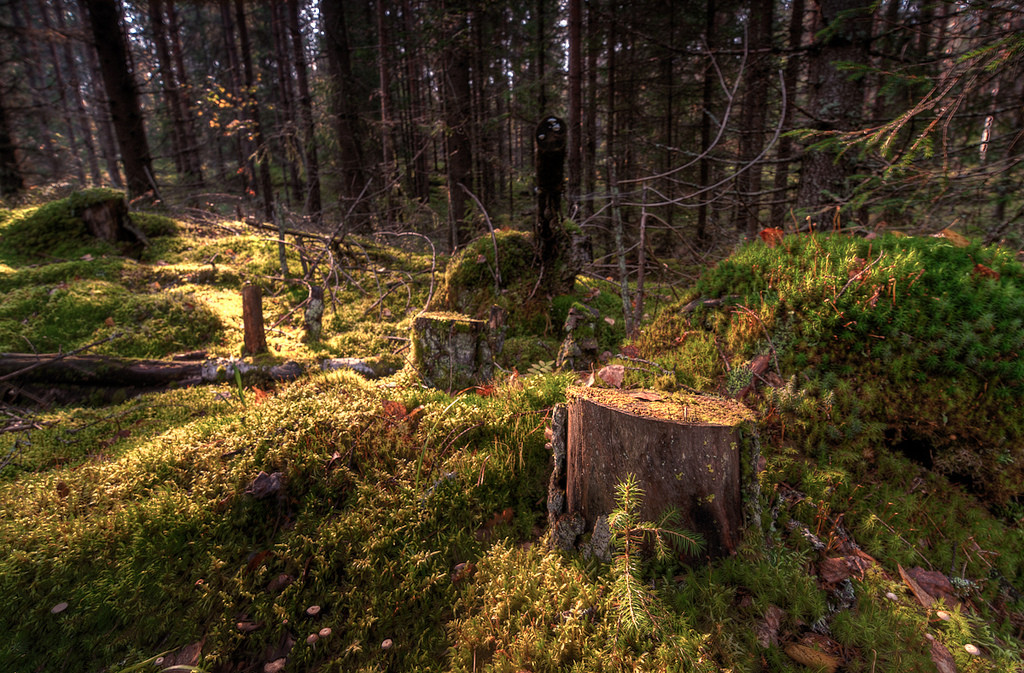If a tree falls in the forest, it will most definitely make a sound. And you’d better hope you’re around to hear it. It may seem like just another piece of the forest landscape, but to a survivalist, a fallen tree can mean self-reliance and success. Here are eight great uses for a fallen tree.
#1: Use as Shelter Foundation
A fallen tree is the best starting point for a shelter that will save you time and energy. By using pre-existing, anchored matter, part of your structure is already built. Huddling under the hollow at the base of the tree is the simplest way to shelter yourself, and will keep you from being completely exposed.
A more complex shelter will utilize the tree’s root structure or trunk as a wall, and branches and leaves can provide much-needed cover. Make sure your tree has fallen in a position that is stable. While a horizontal branch may seem like a great beam for a roof, it won’t be so great if it shifts its weight in the middle of the night.
#2: Build a Fire Reflecting Wall
If the position or stability of the tree isn’t great for a shelter, build your shelter next to it and use the tree for a fire reflecting wall. A firewall reflects heat back onto you and prevents it from dissipating in other directions. This not only keeps you warmer but enables you to warm yourself with a significantly smaller fire. Now you can save the time you would have spent collecting wood cozy in your shelter, furiously hoping that the survival articles you’ve read online have actually prepared you not to die alone in the wilderness.
#3: Dig for Insects
If the tree you find fell quite some time ago, it may not be much more than a heap of rotting wood. Don’t despair! Rotten wood is full of termites, ants, beetles, grubs, and all sorts of tasty, protein-dense insects.
If you’ve got fishing gear, insects are about the best bait you’ll find. If you haven’t got fishing gear and you need some sustenance, bottoms up! The humble bug provides more protein by weight and denser nutritional value than most meats and fish.
#4: Hunt for Mushrooms
There are several varieties of edible mushrooms that commonly grow on fallen trees, including oyster, hedgehog, sulfur shelf, and hen of the woods. Wild mushrooms make supermarket mushrooms taste like a sponge, and one good-sized growth can provide a huge meal (by foraging standards).
That said, there are also several varieties of poisonous mushrooms that commonly grow on fallen trees. Make sure you can tell the difference and have proper education from somewhere far more in depth than this article.
#5: Kill Your Dinner
If you want to do more than just survive, making hunting and fishing tools is the first step to truly thriving in the elements. Part of a branch can easily become a throwing stick, which is exactly what it sounds like – throw it at a rabbit or other small game to stun or kill it. You can also carve a wooden spear or knife. Temper the blade or tip in the fire for a sharper and more durable point. If you’re more of an angler, the right sized branch is an instant fishing pole. Even a fishing hook can be crafted from wood.
#6: Burn It!
This is the most obvious use for a tree, and with good reason: wood is an excellent thing to light on fire. However, logs for the fire are just one of the useful things you can take.
Peel and shred the thin, flaky matter between the outer bark and the wood itself. This is called the inner bark, and it makes for excellent tinder. Even rotting wood can be used. While it doesn’t give off much heat, it burns quickly, which makes rotting wood chips an ideal fire starter.
Fallen trees are often sitting directly on the forest floor, so their wood is often wet. Make sure you’ve fully dried your wood before using it in a fire.
#7: Carve a Canoe
This suggestion involves a little more know-how and a lot more labor but is definitely a worthy project for a long-term survival situation. If you’re near a pond or lake, a canoe will enable you to catch bigger fish, move camp if needed, and significantly expand your foraging and hunting territory.
Make sure your tree is free of rot and at least eight feet long. Then break out your hand tools, and make yourself a sweet ride that will surely turn some heads (even if they’re only deer and squirrel heads).
#8: Harness the Power of Simple Machines
The fastest way to feel like an Ubermensch is to build and utilize simple machines in the wild, and the wood of your fallen tree provides ample material to create them. Three of the most practical machines are the wedge, the wheel, and the lever.
Wedges and levers are both excellent lifting tools, and both can be made easily; chop a wedge from your tree or repurpose a branch for a lever. Wedges are also useful for felling trees and splitting wood. Though more rudimentary, a wooden wedge operates using the same principles as a metal knife. Without an axle, wheels can be used conveyer-belt style for short-range transportation. Cut a small log or branch across its circumference to create solid wood rollers.
Now it’s time to get creative – transport a massive rock for a shelter foundation by lifting it with a lever or wedges and transporting it with wooden rollers. Use a forked tree as a fulcrum for a lever to break small logs for your fire and save your ax blade. By utilizing common materials, you can solve complex problems and dominate your landscape.
